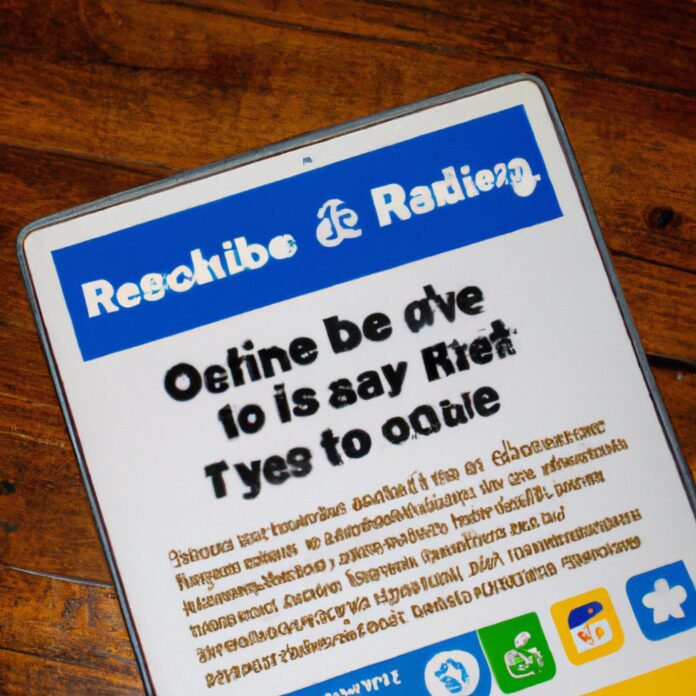Digital citizenship has become an increasingly important subject for children in the modern world. With the rise of the internet, children are being exposed to different digital opportunities and technologies at an earlier age than ever before. Teaching children how to safely and responsibly behave while online has become a priority. This article will discuss the concept of digital citizenship, its importance for kids, and strategies for teaching safe and responsible online behavior.
1. Introducing Digital Citizenship to Kids
Bringing Digital Citizenship to Youth
Youth of today are growing up in a world in which the internet and technology are having an increasingly powerful influence. This makes it important for them to develop digital citizenship skills and an understanding of the potential consequences of their digital behaviour.
It’s important to introduce digital citizenship to children and teenagers while they are young so they can develop along with the technology, establishing the tools they need to function in the online world as they mature.
Here are some tips to help you convey digital citizenship to youth:
- Explain the importance of maintaining a good digital reputation and ways to balance privacy with content sharing.
- Encourage responsible online behaviour, such as using social media without engaging in cyberbullying or other malicious behaviour.
- Introduce youth to the potential risks of interacting with strangers online, and discuss best practices for staying safe.
- Provide clear guidelines and instruction about copyright and intellectual property so they understand the implications of using the work of others.
- Teach youth about good digital etiquette such as not responding to rude comments and how to properly label content when sharing.
Digital citizenship is not only important for youth, but also for educators and parents. Everyone has a role to play in keeping children safe online and educating them on responsible online behaviour.
2. Why it is Important to Equip Kids With Digital Knowledge
As the world continues to become increasingly digitalized, it is more important than ever to give our children the digital tools and knowledge to exist and thrive in the 21st century. Equipping our kids with digital knowledge equips them with the skills needed to navigate the constantly changing digital landscape in both their professional and personal lives. Here are some of the reasons why it is important:
- Builds Confidence – Children who understand the digital world will be better equipped to interact in various online contexts. They will have more confidence in their decisions and interactions, and be more confident in their digital abilities.
- Gives Them an Opportunity to Express Themselves Creative – Giving children access to digital skill sets gives them opportunities to use those skills in creative ways. Digital tools can be used to create art, tell stories, and express ideas.
- Opens Career Paths – Having digital skills in the 21st century is a necessity in today’s workforce. Knowing how to use digital tools and software will expand job opportunities and give kids access to higher positions in the future.
Equipping kids with digital knowledge also helps to bridge the digital divide between generations. Children who use digital devices will be better equipped to help their parents and guardians navigate those same devices. This is important for recognizing digital fluency as an important life skill.
Digital education also prepares children to identify and steer clear of digital threats such as cyberbullying, fraud and identity theft. Once armed with the right knowledge, they can make smart choices and navigate the online world safely.
3. Strategies for Teaching Safe and Responsible Online Behavior
From constructing online identities to navigating the complex etiquette of social media, students need guidance on how to interact in a responsible and ethical manner in the online world. To have meaningful, impactful, and memorable conversations about online behavior, teachers should incorporate these strategies into their lesson plans:
- Share Stories: Rather than lecturing your students on do’s and don’ts about online behavior, share real-life stories as lessons. Ask your students to reflect on their own experiences with technology and explore how they should have responded in hindsight.
- Discuss Responsible Digital Citizenship: Being an online citizen means more than simply avoiding computer viruses. Speak openly with your students about what it means to be a good digital citizen—issues like cyberbullying and online privacy can easily become entrenched in your lesson plan.
- Encourage Engagement Through Experiences: Create activities that allow students to take on a digital dilemma—whether real or imagined. Then ask them to come up with creative solutions that have safe and responsible outcomes and discuss their reasoning.
When teaching students skills to thrive and contribute to their online presence, provide them with an opportunity to explore the guidelines for positive and respectful conversations in a safe environment. That way, when they’re inevitably confronted with tricky situations online, they’ll be ready.
4. Creating Virtual Learning Communities for Kids
Technology has allowed for increased collaboration between kids from all kinds of cultures, backgrounds, and ages. By , we can facilitate this collaboration and build a more connected learning environment.
Virtual learning communities open up a world of possibilities for kids. With access to shared resources and educational tools, they can stay connected, no matter how far apart they may be. Kids can benefit from the knowledge and viewpoints of peers around the world, broadening their minds and stimulating thought.
- Sharing of Ideas: Learning communities allow kids to share and discuss ideas with others. This encourages creativity, collaboration, and gives them a place to practice communication skills.
- Virtual Workspace: Virtual learning communities give kids access to a virtual workspace where they can build projects, work on assignments, and engage with each other.
- Exchange of Experiences: Kids can exchange experiences, stories, and cultural perspectives through virtual learning communities. This helps create a diverse learning environment with a broader worldview.
helps create a connected digital learning experience, and has the potential to create powerful, lifelong bonds between kids all over the world.
5. Empowering Kids to be Proactive Digital Citizens
It’s never too early to start teaching kids the importance of being a proactive digital citizen. Equipping kids with the skills they need to be proactive online will not only help protect them from digital dangers, but also put them in control of their online presence. Here are five ways to empower kids to be proactive digital citizens:
- Encourage Critical Thinking: Teach kids to question everything they see online. Help them think critically about the messages they see, so they can make informed choices.
- Help Them Research: Teach kids about the importance of researching to find reliable sources of information. With open access to the internet, this is more crucial than ever.
- Show Examples: Let kids observe and learn from positive examples of proactive behavior online, such as creating content that shares knowledge or helping out in virtual spaces.
Meanwhile, it’s also important to teach kids the negative consequences of not being a proactive digital citizen. Talk to them about the dangers of cyberbullying, being exposed to inappropriate content, and how misinformation can have serious consequences.
By engaging kids in constructive conversations, and empowering them with the tools and knowledge they need to be proactive online, they can become responsible digital citizens and stay safe online.
As our children become more and more immersed in the digital world, it is important that we equip them with the skills to stay safe and responsibly navigate the internet. Through education, positive reinforcement, and thoughtful guidance, we can help our kids develop into well-rounded digital citizens who can benefit from all that the web has to offer. As parents, teachers, and tech experts, let’s do our part in teaching the digital citizens of the future!


